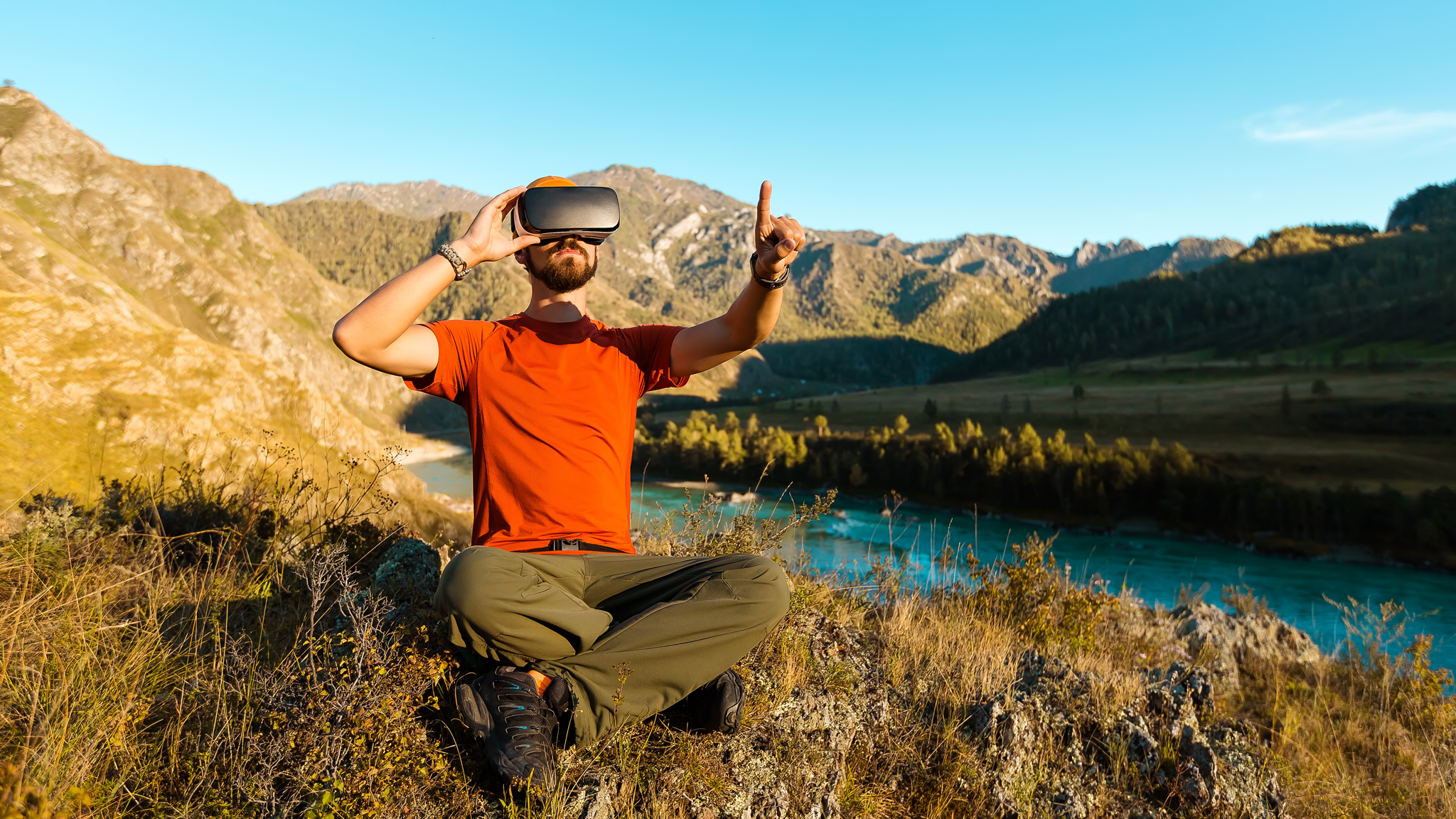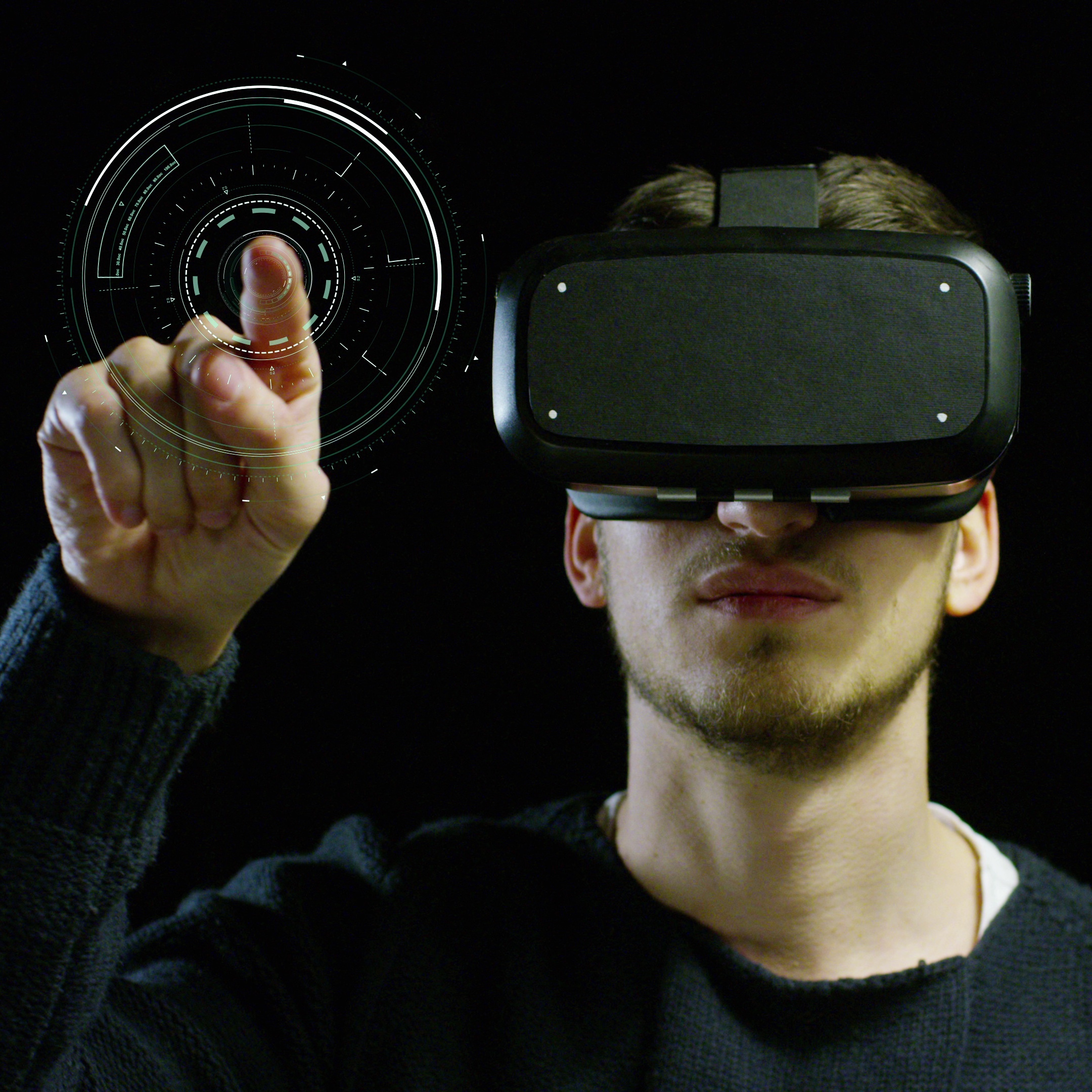Navigating the Virtual: The Rise of Virtual Tours in a Post-Pandemic World
The first immersive Van Gogh exhibit, a virtual tour of his work, took place in 2008. David Attenborough’s First Life documentary, a virtual tour back in time, was made in 2015. Disney introduced virtual tours of its rides in 2016. Their YouTube channel features videos allowing viewers wearing VR headsets to experience all their rides.
These were a few of the most noteworthy virtual experiences being created at the time. Hotels and real-estate agents also had the occasional 360-degree video, offering a virtual tour to potential guests and buyers, respectively. They rose to real popularity, however, amidst pandemic-led lockdowns. This is when virtual tours of spaces became more mainstream. These tours allow people to explore places remotely as if they were actually present there – they live through digital simulations such as 3D renders of existing locations. The tourists can pan 360 degrees, and often, other multimedia assets such as sound effects, music, narration, text, etc., lend to the immersiveness of the engagement and a feeling of reality.
Let’s look at some numbers to give this some perspective. The virtual reality headset market was valued at $5.5 billion in 2019. By 2020, the combined augmented reality and virtual reality markets were worth $12 billion, with an annual growth rate of 54%.
There is more growth in store –
the VR headset market has a projected valuation of $72.8 billion by 2024! Virtual tours are expected to grow in tandem. The virtual tour market was valued at USD 301.5 million in 2021 and is expected to grow at a CAGR of 14.4% between 2022-30. That’s a lot of food for thought, or, must we say, a feast for the eyes!
Today, virtual tours of spaces are democratizing access to tourist spots globally. Have the Northern Lights on your bucket list but still need the budget? Catch a virtual 360-degree tour on Explore.org. This also means that age, health, and physical ability no longer stand in the way of people checking experiences and destinations off their wish lists. But virtual tours of spaces aren’t limited to touristic pursuits. They have also found a loyal following among businesses, with companies using them to tell engaging, immersive brand stories at meetings and exhibitions and within their own museums and experience centers.
The Evolution of Virtual Tours
VR has been around for decades and had a variety of use cases over time. NASA had a VR prototype headset in 1985. It was created to simulate environments and complex technology that astronauts would need to work with in space. It even came with a glove that could provide a tactile representation of the environment and equipment. A few years later, a virtual tour exhibit at the touristy Dudley Castle in England showcased what it (the castle) looked like back in the 1500s. Later in the 90s, Japanese gaming company Nintendo’s Virtual Boy used VR tech to give players a first-person view from the window of a tank while they shot down enemy tanks.
Eventually, in 1995, Apple launched its QuickTime VR, an image file format that allowed people to create and view VR images, panoramas, and 360-degree photography. For the longest time, as most of us will remember, VR was used by hotels and real estate agents for virtual tours of spaces like hotel rooms, restaurants, and homes, and on rare occasions, by retailers.
Virtual 360-degree VR tours have evolved significantly, especially in the last five years. Today, extended reality is a buzzword. Extended Reality (XR) is the overarching term that refers to the combination of Augmented Reality (AR), Virtual Reality (VR) and Mixed Reality (MR). XR is used in marketing, training, and product development too. Virtual tours of spaces are gaining ground, and some of the world’s most popular destinations and experiences are now accessible to everyone, courtesy of XR. Did you know that you can tour the Louvre virtually?
Types of Virtual Tours: 360° vs. 3D vs. VR-enabled
The terms virtual 360-degree VR tour, 3D tour, and VR tour might sometimes be mistakenly used interchangeably, and in fact, a virtual tour might have elements of virtual 360-degree and 3D tours. Let’s take a quick look at how the three concepts differ from one another.
1. A virtual 360-degree VR tour, as the name suggests, offers an all-around view of a specific location. The viewer can look right and left, and also above them and at the floor beneath them.
2. A 3D tour uses 3D models and a series of images and videos of a location.
3. A VR-enabled virtual tour of spaces – our topic for discussion here – takes things to the next level and simulates an existing location using sequential videos. Sound effects are added to give a sense of reality to the virtual tour, like, for example, the whistling of wind on a rocky cliff. Floor plans may be used for indoor locations.
Processes, Technologies, and Tools Behind Virtual Tours
So how are these magical, immersive virtual tours of spaces created? What are the processes and technology used behind the scenes?
Photogrammetry is the process of taking many photographs of an object from a variety of angles and stitching them together to create a 3D model. A standard digital camera can be used with specific software that detects overlapping patterns to build up a 3D reconstruction of the photographed object. Google Arts & Culture uses photogrammetry for its museum tours.
Lidar scanning, also known as LiDAR, stands for Light Detection and Ranging. This technique uses a LiDAR camera and shoots infrared light pulses at objects intended for the virtual tour, and then uses the time taken for them to return to create 3D models of them. This technology is becoming more affordable, which means that the expenditure behind commissioning virtual tours is also set to reduce.
Web-based vs. Headset-based Virtual Tours
Brands looking to use virtual tours of spaces to drive customer engagement might have one very pertinent question: How essential are VR headsets to the virtual tour experience?
Well, VR headsets may provide the most immersive experience (led by confinement and forced attention), but customers can also undertake virtual tours of spaces using mobile devices and tablets. For example, you need a VR headset to experience David Attenborough’s immersive documentaries, but you can use Google Street directly from your mobile device, tablet computer, or desktop PC.
Users can also access a web-based virtual tour of the space that the brand would like to showcase. The most common example of this is virtual tours of hotels. Such experiences do not need a headset.
Virtual tours that use Augmented Reality (AR), Mixed Reality (MR), and Extended Reality (XR) and project content into the viewer’s real world are another way of enabling a virtual tour experience that does not require a headset.
These headset-non-reliant methods of creating VR experiences became popular in a post-pandemic world where the sharing of devices is still a concern for people.
Applications Across Various Industries
Virtual tours of spaces are useful across sectors. Imagine being able to check the appearance of a beach, natural reserve, entertainment park, or any other type of tourist attraction before you visit.
Hotels can also utilize virtual tours to transcend the abilities of the written word and showcase their facilities, unique design, impeccable hygiene, and other features to potential guests. In fact, in a post-pandemic world, where guests are increasingly concerned with cleanliness and sanitization, VR tours lend hotels a great opportunity to showcase their diligence in these areas.
Real estate companies and agents can engage busy customers without having to convince them to attend open houses physically. Virtual tours of spaces would eliminate the biggest disincentive to viewing properties – having to spend time in heavy traffic or a long commute to and from the location. Buyers can view numerous properties and only make physical visits to shortlisted options.
Virtual tours of spaces can be invaluable in B2B relationships: Vendors, investors, and potential partners can view remote manufacturing set-ups and projects from the comfort of their own offices or centrally located Executive Briefing Centers. It also allows viewers to cover vast facilities in a fraction of the time that it would take to do so physically.
The Business Case for Virtual Tours
Should you get virtual tours for your business? Well, over two-thirds of customers who participated in a survey appear to think so! Moreover, the fact is that in a post-pandemic world, people do consider questions like, “Do I need to travel to view this or discuss this? Can it be done remotely?” Although business travel bounced back fairly quickly post-pandemic, the sense of pandemic-prompted cautiousness has transitioned into a sense of, “Do I really need to invest in a trip.” That’s where concepts like Executive Briefing Centers – which are typically located in metros where prospects live and work rather than in remote areas like manufacturing facilities – make a big difference. They cut down on the need for unnecessary travel. Here’s how virtual tours of spaces can improve your business prospects:
● Improves searchability
Did you know that businesses that have a virtual tour on their Google Maps profile rank far better in SERPs? Virtual tours are an essential move in SEO.
● Widespread lead generation
A virtual tour can help businesses reach potential customers beyond geographical boundaries. Companies can also overcome obstacles like working hours, limited time availability, and conflicting schedules by letting prospects explore their products or facilities using virtual tours.
● Proof of value and customer confidence
Virtual tours of spaces can give potential customers a transparent view of the value that a product, destination, or facility brings to the table. You allow customers to test your claims in a way – the customer gets a chance to overcome any doubts or objections before they visit or make any payments.
● Improve conversions
More confident prospects are more likely to become paying customers. Businesses with a virtual tour are twice as likely to bag the customer.
● Virtual tours for training
How does an astronaut get trained for their first outer space mission? Using simulations and virtual tours of space vehicles. In fact, pilots, too, are trained on simulators before they are allowed to train on actual plans. Virtual tours for training drive safety, improve confidence, and reduce costs that might occur from accidents or misinformed usage.
Virtual tours for training are also relevant to the average company. For example, salespeople who target big retailers can be trained on how their clients stock and store the products that they need to sell – this gives the salesperson a more informed perspective.
In addition, virtual tours in training can be used to drive know-how around sensitive or hazardous environments or factory set-ups. People can be coached before they hit the ground at a remote location using virtual tours in training.
Future of Virtual Tours
Virtual tours of spaces were once the future. They were science fiction. We can already visit the depths of the ocean and outer space with virtual tours.
Given how far virtual reality has come, it’s easy to imagine how virtual tours of spaces that exist in reality can soon become virtual tours of imagined space. This is exactly what metaverse, which Meta (Facebook) describes as a place to “explore virtual 3D spaces where you can socialize, collaborate and play,” promises to be. Virtual tours could become the basis for a completely new form of online interaction.
Augmented reality can bring VR experiences of spaces into the viewer-user’s physical environment – we already see this to some extent – you can upload a picture of your hand to “try on” watches or jewelry while shopping online, for example. But you could soon have Siberian huskies – or even unicorns – running around your living room. As a business, you might be able to showcase how and where a security system could fit into your customer’s existing home or office, for example. You can project your holographic presence or the holographic presence of a product to a seminar or exhibition even if you cannot make it there physically or if it is a challenge to transport your product there.
AI can enable an analysis of user environments, allow for personalization of experiences, and also generally improve and optimize experiences. For example, if there are eight speakers at a conference, and three are addressing the audience remotely, AI can guide AR to generate holographs of the correct speakers.
To sum up
Virtual tours of spaces have tremendous relevance to modern businesses of all sizes and could also represent the future of socialization. They are increasingly relevant in a post-pandemic world, where leisure travelers want to verify destination and hotel hygiene attributes before visiting and where business travelers would rather have the convenience of remote observation and discussion. Moreover, as the world becomes more inclusive to people of all abilities, virtual tours could help improve accessibility.



